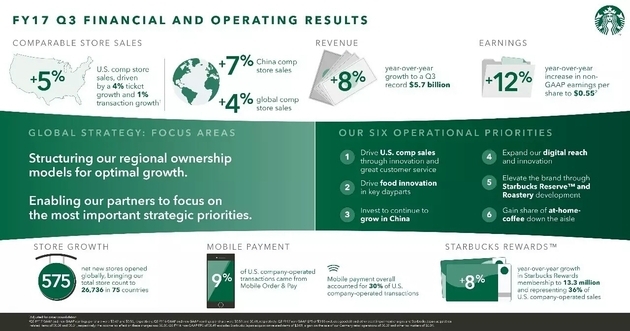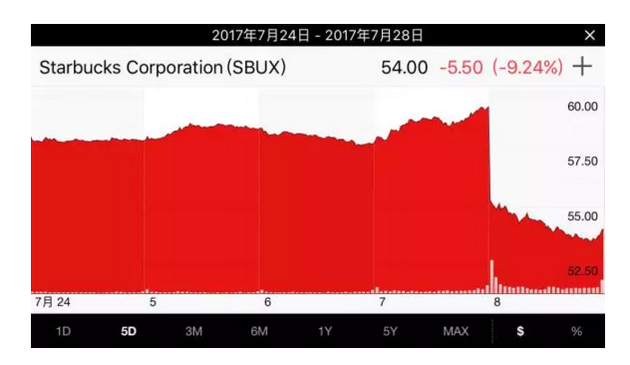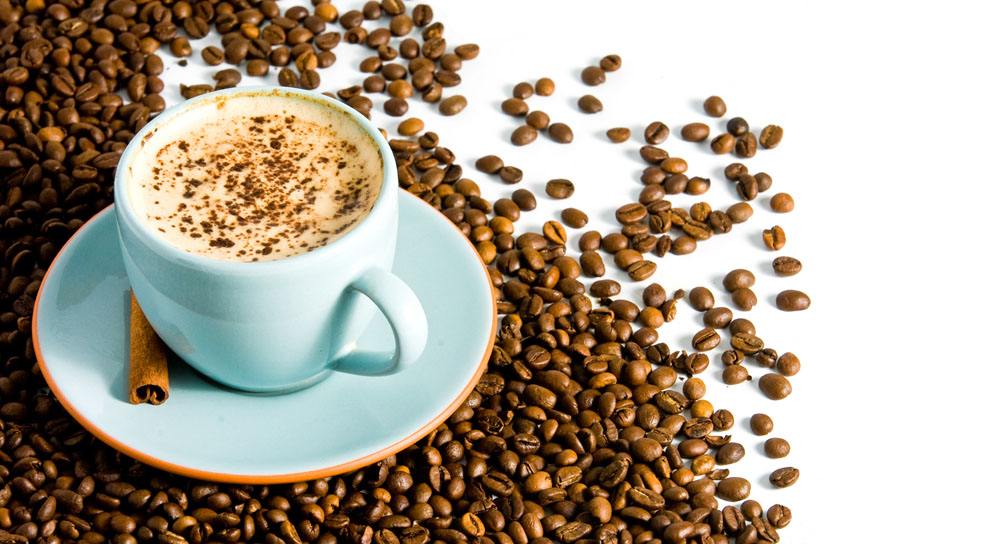How hard is it to sell a cup of tea? Starbucks closes all its 379 Teavana tea stores
Tea or coffee (Tea or Coffee)?
This is the most common question asked by Westerners when entertaining guests. When coffee entered the Chinese market on a large scale, many beverage stores in China also began to offer consumers a choice of tea and coffee. Starbucks, the world's largest coffee chain, is naturally reluctant to let go of the tea business.
Recently, however, Starbucks finally realized that selling tea and coffee are two different things. It took Starbucks about four years and at least $620 million to recognize this fact.
Starbucks announced in its fiscal third quarter report that it would close all its 379 Teavana tea stores on July 27th local time, indicating that the company's plan to enter the tea industry ended in failure.
Some Chinese netizens joked that the closure of Starbucks teahouse may be due to the lack of a deck of playing cards.
On July 27, US time, Starbucks released its third-quarter results. Revenue rose to $5.7 billion, a record in the company's history, according to the report.

In a statement released along with the quarterly results, Starbucks said many of its Teavana stores were a drag on its performance and would close all its 379 Teavana stores in the spring of 2018. The affected 3300 employees will be "given the opportunity to apply for positions in Starbucks stores", and Starbucks stores will continue to sell Teavana teas.
Starbucks shares fell 9.24% the day after the results were released.

Closing Teavana stores is a blow to Starbucks' foray into the tea market, but we need to look back at Teavana's years at Starbucks and Starbucks' dream of selling tea on it.
In 1971, the first Starbucks store opened in Seattle. The store sign says "Starbucks Coffee Tea&Spices". This may suggest that Starbucks never intended to let go of the world's second-largest beverage market in the first place. In 1999, Starbucks acquired Tazo, a tea producer and distributor.

But Starbucks really launched an attack on the tea market in 2012.
In 2011, Starbucks made a major decision to remove "coffee" from logo, which means that although coffee remains Starbucks' core business and symbol. In 2012, it bought Teavana, an Atlanta-based tea retailer, for $620 million. This time, Starbucks made a slogan to run tea like "coffee."
Unlike beverage stores like Starbucks, Teavana is mainly a retail store that sells dried tea. Each editor found on the Teavana website that a can of Teavana tea costs about $45, and a can of tea can make 35 or 40 cups of tea.
Through the acquisition, Starbucks acquired nearly 300 Teavana direct sales stores around the world. Teavana's original model is probably: global procurement-configuration of special tea-brand-distribution and quality control-online and offline channel sales.
But like the vision of "running tea like coffee", Starbucks doesn't want to just sell tea bags in coffee shops or Teavana stores. So in October 2013, the first Teavana tea bar opened in one of the wealthiest neighborhoods in Manhattan.
Starbucks seemed confident about the tea business and quickly set its own small goal: to open 1000 Teavana stores around the world within five years.
However, things did not work out as expected. Starbucks' tea business has not been booming, especially compared with the main business of selling coffee.
In January 2016, Starbucks announced that four of the five tea bars would be closed. Three of the tea bars in New York will be converted into Starbucks coffee shops by the end of April, while the one near Beverly Hills in Los Angeles will be completely closed. Five tea shops leave only one "experimental site" in Seattle. At about the same time, however, Starbucks placed its hopes for the tea market in China.
In March 2016, fortune reported that Starbucks will open its first Teavana store in China in September 2016. As a result, up to now, there has not been a Teavana in China, but Starbucks' Chinese stores do begin to sell Teavana tea.
The company is also anxious about Teavana's performance, and in April, Starbucks announced that it would "evaluate strategic options" for its beleaguered Teavana tea store. In the end, they attributed Teavana's poor performance to the decline of physical retail. Every editor found on the Teavana website that most of its tea stores are located in shopping malls across the United States and Canada, while in recent years, large shopping malls have been in trouble due to e-commerce competition, with declining passenger traffic and various physical stores closing one after another.
According to Feng's Global Retail and Technology Research (Fung Global Retail&Technology) statistics, from the beginning of this year to June 20, 5300 physical stores in the United States have been closed, a record. In the year of the financial crisis in 2008, 6163 stores across the United States closed, and this year's figure is likely to exceed that number. In addition, 345 retailers have filed for bankruptcy this year, an increase of 32% over the same period last year, according to the bankruptcy data website.
In fact, this is not the first time Starbucks stores have closed down. Also in 2012, Starbucks bought Bay Bread, a bakery, and its coffee shop, LaBoulange, for $100m. At the time, LaBoulange had only 23 stores, and Starbucks had planned to expand that number to 400. But it backfired, and just three years later, Starbucks announced the closure of all 23 LaBoulange stores.
Important Notice :
前街咖啡 FrontStreet Coffee has moved to new addredd:
FrontStreet Coffee Address: 315,Donghua East Road,GuangZhou
Tel:020 38364473
- Prev

Analyze the common taste and astringency of coffee
Follow the caf é (Wechat official account vdailycom) found that the beautiful cafe opened its own shop, astringent taste, which is bound with persimmons and cucumbers, sometimes unfortunately also appears in the coffee. Once a good cup of coffee appears astringent taste, that is, the white jade is slightly flawed, and this astringent taste can easily become more intense as the temperature of the coffee drops, becoming sour and bitter.
- Next

Why does Starbucks prefer China? Open another 1.33 stores a day for the next five years.
Following Kaiping (Wechat official account vdailycom) found that Beautiful Cafe opened a small shop of its own, with 2800 stores all operating itself to 5000 in 2021. This is another growth story about the Chinese market. Starbucks spent 1.3 billion US dollars to take over the operation rights of all Starbucks stores in mainland China, which means that all Starbucks stores in mainland China will be owned by Starbucks.
Related
- Why can American refills for free? The difference between Americano and American drip pot coffee
- Being chased out of the rain in front of Starbucks?! Store: Sheltering from rain under umbrellas poses a safety hazard
- The white moonlight has changed?! Lucky launches "Big Winter Pear American"
- Hand-brewed coffee three-stage method, high-sweet and universal brewing method to share! What does the high sweet water level of hand-brewed coffee mean?
- What is the difference between raw, refined and full espresso coffee? How to extract espresso and taste good?
- A complete list of coffee bean names and their meanings! What is Yejia Shefi coffee? Where is Mantelin coffee?
- What grade does Arida Manor Kaduai coffee beans belong to? What treatment is Arida ASD slow anaerobic sun exposure?
- The milk tea cup becomes smaller?! Overlord Tea Girl launches a new "Return to Yunnan" series
- Accused of selling counterfeit and high-priced coffee beans! Well-known boutique coffee brand "Oukelao" bowed and apologized!
- How to make espresso dumplings? Can I eat coffee and glutinous rice balls together?

